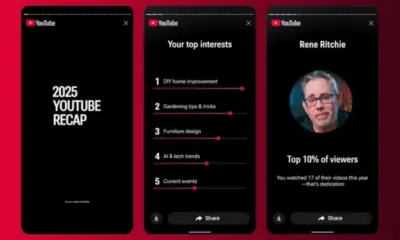Business
U.S. Electric Vehicle Sales Lag as Global Market Thrives

The electric vehicle (EV) market in the United States is facing a significant slowdown, according to recent reports. Following a decline in deliveries and revenue, Tesla CEO Elon Musk cautioned that the end of U.S. government support could lead to “a few rough quarters” for the automaker. This comes as Tesla struggles to regain momentum through the introduction of a more affordable model and its plans for autonomous ride-hailing services.
Despite the challenges faced in the U.S. market, global EV sales continue to surge. According to Rho Motion, approximately 9.1 million EVs were sold worldwide in the first half of 2025, representing a 28% increase year-on-year. China led the market with 5.5 million units sold, followed by Europe with 2 million. In stark contrast, North America saw only 900,000 units added, a modest 3% increase compared to the previous year, as reported by Electrek.
The U.S. market has experienced a downturn, with data from Cox Automotive indicating a 6.3% decline in EV sales during the second quarter of 2025, totaling 310,839 units. This marked only the third year-on-year decline since EVs became mainstream. While incentives remained high, averaging $8,500 per vehicle in June, they failed to stimulate additional demand.
Tesla’s global deliveries dropped to 384,122 vehicles in Q2, reflecting a 13.5% decrease year-on-year, according to Reuters. In contrast, Chinese automaker BYD reported a 16% increase in global deliveries and a 46% rise in battery-electric vehicle sales, surpassing Tesla in global battery electric vehicle market share for the quarter. General Motors also performed well, delivering 46,280 EVs in Q2, more than doubling its volume from a year ago and positioning itself as the second-largest EV seller in the U.S. Ford experienced increased sales but has moderated its EV investments due to cost pressures and revised capital priorities.
The U.S. policy landscape is rapidly changing. The “Big, Beautiful Bill,” signed by President Donald Trump earlier this month, eliminates the $7,500 federal EV tax credit as of October 1. This legislation also ends credits for used EVs and home charger installations. Analysts predict a temporary boost in sales during Q3 as consumers rush to secure benefits before the deadline, followed by a deeper slump in Q4, according to Reuters.
Infrastructure gaps are compounding the demand risks. As of midyear, fewer than 400 fast-charging ports have been completed under the federal government’s $7.5 billion National Electric Vehicle Infrastructure program, far from its targets. This shortfall could hinder EV adoption, particularly in less populated areas.
Globally, the EV landscape remains robust. China now accounts for over 60% of global new energy vehicle production, supported by vertically integrated supply chains and continuous model releases. In Europe, Chinese brands are gaining market share despite new tariffs, offering low-cost battery electric vehicles that undercut traditional automakers.
For the energy sector, this divergence could pose challenges. Utilities anticipating rising electricity demand from EVs may need to adjust their projections downward. Additionally, battery producers that expanded U.S. production could face excess capacity if demand weakens. Conversely, companies connected to Chinese or European supply chains may continue to thrive amid sustained global growth.
While Q3 may provide a temporary lift in U.S. volumes, the overall outlook remains fragile. Observers will closely monitor Tesla’s ability to reposition with a lower-cost model and fulfill its promises regarding robotaxi services. Although EVs are increasingly becoming mainstream globally, the U.S. is struggling to maintain pace in this competitive market.
-

 Politics4 weeks ago
Politics4 weeks agoSecwepemc First Nation Seeks Aboriginal Title Over Kamloops Area
-

 World5 months ago
World5 months agoScientists Unearth Ancient Antarctic Ice to Unlock Climate Secrets
-

 Entertainment5 months ago
Entertainment5 months agoTrump and McCormick to Announce $70 Billion Energy Investments
-

 Science5 months ago
Science5 months agoFour Astronauts Return to Earth After International Space Station Mission
-

 Lifestyle5 months ago
Lifestyle5 months agoTransLink Launches Food Truck Program to Boost Revenue in Vancouver
-

 Technology3 months ago
Technology3 months agoApple Notes Enhances Functionality with Markdown Support in macOS 26
-

 Lifestyle3 months ago
Lifestyle3 months agoManitoba’s Burger Champion Shines Again Amid Dining Innovations
-

 Top Stories2 months ago
Top Stories2 months agoUrgent Update: Fatal Crash on Highway 99 Claims Life of Pitt Meadows Man
-

 Politics4 months ago
Politics4 months agoUkrainian Tennis Star Elina Svitolina Faces Death Threats Online
-

 Sports5 months ago
Sports5 months agoSearch Underway for Missing Hunter Amid Hokkaido Bear Emergency
-

 Politics5 months ago
Politics5 months agoCarney Engages First Nations Leaders at Development Law Summit
-

 Technology5 months ago
Technology5 months agoFrosthaven Launches Early Access on July 31, 2025





















